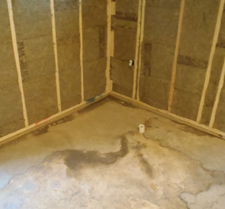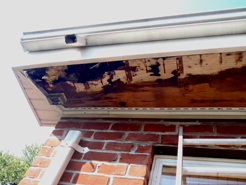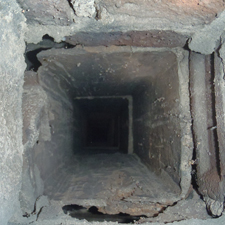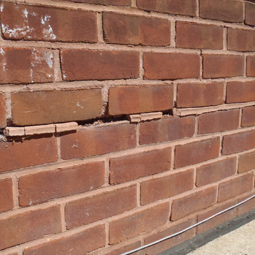|
Consultant, Planner, Designer,
Third Party Architect and Construction Coordinator
Design and Construction Reviews, Opinions and Advice
When you hire an architect, engineer or contractor, do you feel qualified to review, inspect and question the services and work provided? Or do you take the services on faith?
Building a custom home or making additions and/or alterations to an existing home is one of the major expenses of a lifetime. Rarely does an owner get to benefit from the experience on a second project. Obtaining a second opinion on a construction project is no different than seeking a second medical opinion when dealing with an unknown condition.
Large institutions and corporations that hire architectural and engineering professionals still have in-house design and construction management staff to run their building programs. Many first time clients and/or clients with small construction projects, would benefit from having a third party knowledgeable in design, planning and construction acting on their behalf.
|

Water on Floor, Soaked Insulation and Framing Due to Failed Installation of Interior Foundation Drain and Incorrect Framing Installation
|

Rotting Soffit Due to Incomplete Flashing Installation Compounded By Poor Framing Details
|

Access Point of Rat Intrusion
Due to Incomplete Foundaiton Wall
|
|
For The Inexperienced Construction Client
Construction is not an over-the-counter purchase no matter how much you as a purchaser want it to be. As a once-in-a-lifetime construction project customer, you want to accept assurances that "everything is ok" or ”yes, we'll take care of it”. When you hear the infamous "don't worry about it”, you should definitely start worrying about it.
Once a project is complete, it is too late for planning and oversight. Having design, planning and project management services for a small project may be hard to justify financially. Especially when it is easier just to trust a contractor. However, if faced with blatant construction defects, conflicts with a contractor, or losing money already paid, having essential design, planning and project management insights will seem to have been both practical and critical.
If paying 3 to 6 percent to a realtor to sell your property is acceptable, but paying from 3 up to 24 percentage for varying degrees of planning and oversight of construction to build that property seems too much, consider that hiring a consultant to provide targeted services can provide the greatest cost benefit.
See "How Third Party Reviews Can Work For You" below.
Experience is a hard teacher - first you take the test, then you learn the lesson.
|
|
How Third Party Reviews Can Work For You.
Reviews can be provided at any or all of these stages of a project.
1) Assistance with room layout, space planning and structural changes can assure rooms flow together and work architecturally. This can be a review of a client's or other party's drawings. You may want more than what an individual builder is willing and/or able to do.
2) Hiring a Design/Build company for the ease of 'everything is provided', only gives you a fixed price for a fixed amount of work. Hiring a contractor with his own architect only means he has an architect working for him and not you. If reading construction documents is new to you, who will say the drawings provide what you want? A progress review or reviews of drawings can catch missed opportunities and point out potential problems while confirming the plans meet your objectives.
3) What happens when it is necessary to worry about outcomes? Small construction contractors are skilled in using cost, schedule and inconvenience to leverage what they want and not what you want. Early on would be the time to get a third party opinion on your construction contract to avoid misunderstandings, contract disputes and defaults during construction.
4) Construction is complete, but what happens when there is a leak or crack or rot? Have the drawings, the code, and the manufacturer's recommendations been followed? Was your project built according to good construction practice? Keep in mind the local building inspector is not conducting comprehensive inspections of the work during permit inspections. Making sure the project is built well is the owner's responsibility. Site reviews during construction can protect against most problems that show up after the warranty is over and the statute of limitations runs out.
The major milestones where and owner may want to obtain a double check are:
• At the start, to clarify objectives and initiate direction.
• During the early design to review plans for conformance to the project objectives, and if other alternatives are being considered.
• Document reviews during drawing development after the design is complete. These are typically done at 25, 60 and 100 percent completion. Document coordination and review involves reading the drawings and specifications, and, ultimately, contract documents for comprehension and to see that the documents are coordinated. Early document reviews can foster ease of comprehension, identify methods that are more cost effective, and identify details prone to future problems at a point when extra planning and/or construction costs for changes can be avoided. Easy-to-comprehend drawings are easier to bid and can provide lower construction costs.
• Review of construction bidding procedure and bids.
• Site visits at construction milestones to identify conformance to the drawings, as well as address on-site construction and contractual issues while a project is under construction. These are done after the completion of site layout, footings are cast and wall lines chalked, foundations walls are cast, when floor joists are set and again when walls are chalk lined to the deck, roof framing, mechanical plumbing and electrical layouts, roofing, siding, windows and doors, and trim … more or less.
For The Experienced Construction Client
For the client who has completed previous projects, the cost of change-orders can be regarded as the price of doing the job. Inherent in planning is the understanding that 100 percent of issues can not be seen in advance. Yet seeing 90 percent rather than 80 percent still saves money, time and administrative headaches. Reading the drawings for coordination and comprehension can also lower bids. Some examples of issues that have been found in planning documents include: 6-8 doors in 5 foot walls, duct work cutting through beams, sliding doors opening out of a second floor, missing columns, level gates set on 30 degree slopes, details not matching higher level plans, incomplete work included in pay requests, and punitive subcontractor agreements.
Hiring a third-party Design & Construction Coordinator to help with oversight and coordination of the primary architect, engineer and builder of record provides the insight, language and mechanical understanding to communicate what is needed and distinguish nonperformance from project complications. Having construction project design and planning experience sheds light on construction delay strategies and the organized chaos that is construction.
|





